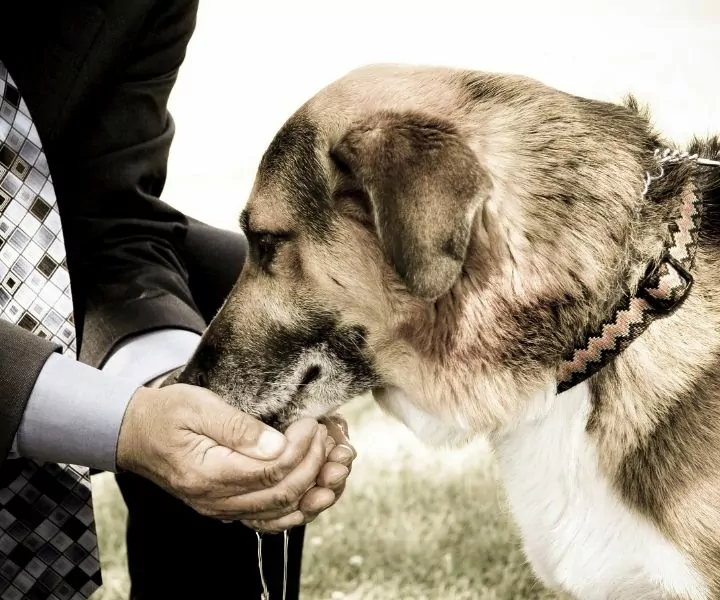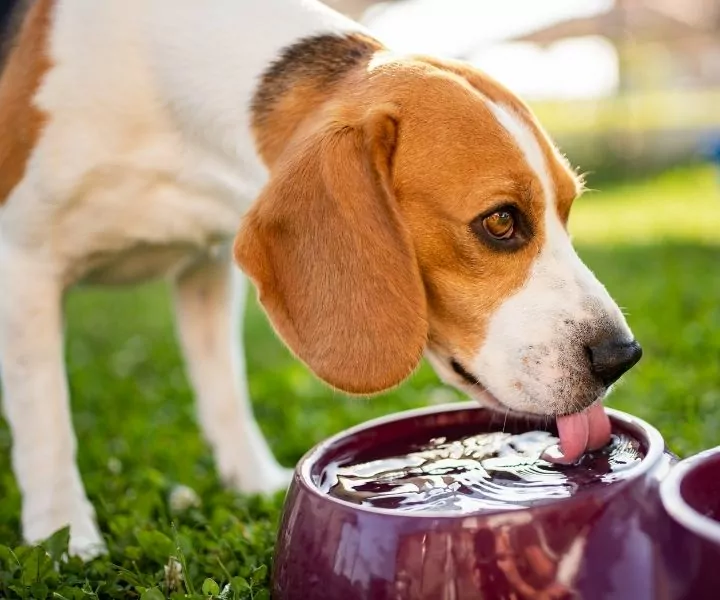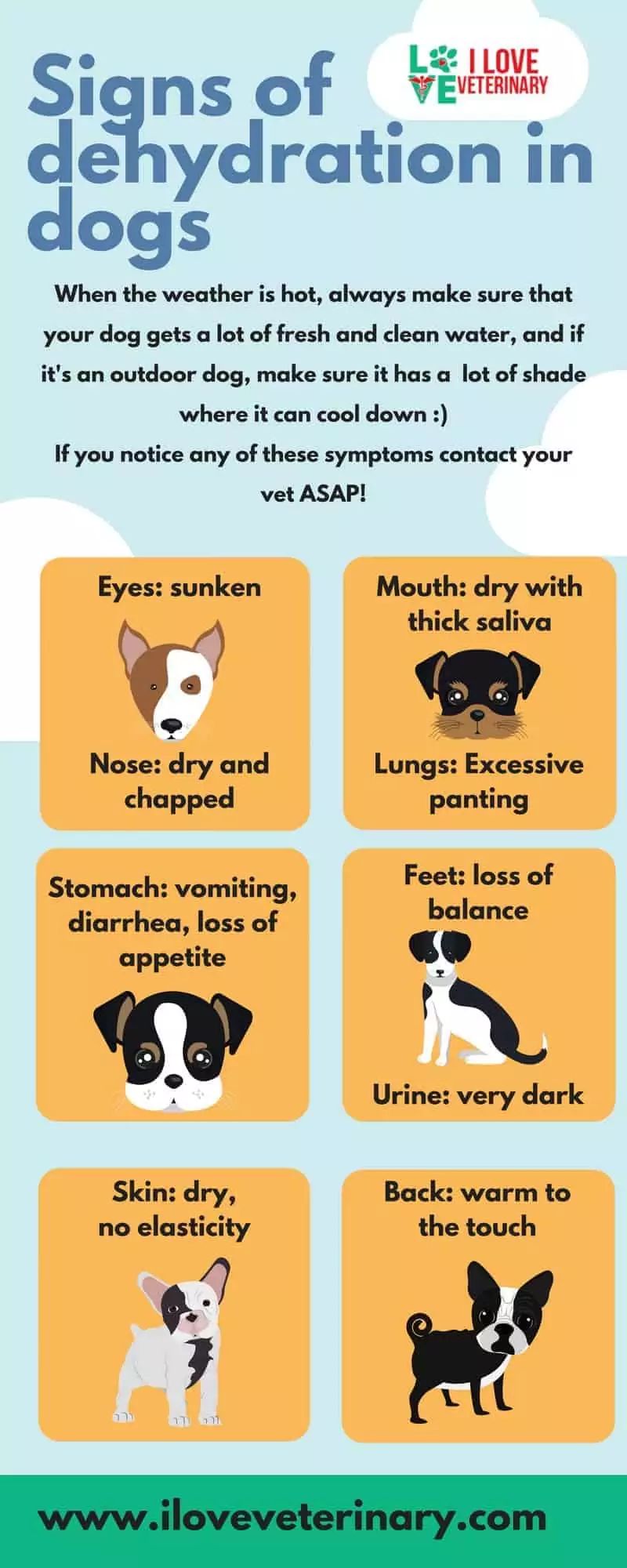What is Dehydration in Dogs?
Dehydration in dogs implies that the total body water is below normal, we can say that we are dehydrated. The same goes for our dogs as well. Along with water loss, the organism loses electrolytes as well. Electrolytes are minerals, like chloride, sodium, and potassium.

The main causes of dehydration are lack of intake of water or increased water loss because of some illness or injury.
Thirst and dehydration should not be confused. While thirst reminds us that we should intake water, dehydration can potentially be a life-threatening medical condition that doesn’t always have thirst as a symptom.
When the weather is hot, always make sure that your dog gets a lot of fresh and clean water, and if it’s an outdoor dog, make sure it has a lot of shade where it can cool down 🙂
If you notice any of these symptoms contact your vet ASAP!
Get this Signs of Dehydration in Dogs Poster for your clinic or classroom.
Signs of Dehydration in Dogs
Dogs are supposed to drink water like a human as well as urine. They should also be able to conserve water by shutting down their kidneys if they run low on fluids. In instances where dogs have not been adequately hydrated, there are signs that may be present, such as panting and drooling or even vomiting.
If a dog is drinking frequently but has normal-looking urine and no accidents around the home, it may be time to consult with your vet for any treatment that might be necessary.
When a dog is dehydrated, symptoms can include:
- Panting
- Skin that is dry and tacky to the touch
- Listlessness including having very little appetite or playfulness
- Excessive thirst with infrequent urination for example, the dog may have urinated only once in 24 hours or even less frequently than that. The urine will range from dark yellow to orange in color.
- The dog may stop urinating altogether
- Vomiting
- Depression and lethargy
If your pet is experiencing any of these symptoms, you should immediately contact your vet to schedule an appointment. If you do not receive the necessary treatment, the dog could develop serious complications such as shock. Other signs of serious dehydration are extreme fatigue or collapse.
Eyes are sunken and the nose is dry and chapped. The breathing is more like excessive panting and the mouth is dry with thick saliva. There can be diarrhea, vomiting, and loss of appetite.
The dog may experience a loss of balance. The urine would be very dark. There would be no elasticity in the skin and it will appear dry. If you touch the back of your dog it would appear warm to the touch.

Test for Checking if Your Dog is Dehydrated
Skin Elasticity Test
Pinch the dog’s skin on the back between the shoulders with your thumb and forefinger. Gently lift the skin two to three inches from the body. When you release the skin, it should go back immediately. When the dog is dehydrated, the skin slowly returns to the normal position, or in some very bad cases, the skin doesn’t go back at all.
Help My Dog Won’t Drink Water!
More dogs than people have kidney disease, so this is a good place to start. it is common for a dog to lose interest in drinking water if they are experiencing renal failure.

Renal failure is often the result of diabetes, aging, or immune system problems. Diabetes mellitus may be discovered when checking for other symptoms of dehydration.
Sometimes it may not be detected until kidney failure sometimes occurs suddenly in the absence of any known cause and with no warning signs.

